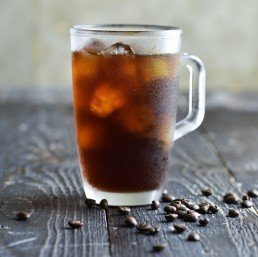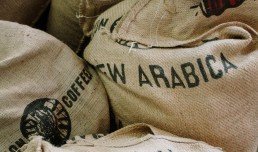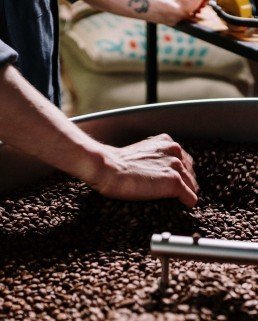Cold brew coffee – What is it and why do it at home?
As mentioned in the black ice coffee overview there are several different ways to prepare a black ice coffee. We already talked about flash brew and cold drip coffee and have hopefully answered most questions why you should try it at least once. In this article we will specifically talk about cold brew coffee. Because each method has its own advantages and disadvantages we’ll highlight these to help you make the right choice.

Cold coffee trend
Cold brew is America’s answer to the more complex cold drip coffee process that originated from North-East Asia. Cold drip coffee is also known as Dutch coffee, Kyoto style coffee or ice drip coffee. As for brewing cold drip coffee specialized brewing equipment is needed, a solution for an easier way of brewing was found in cold brew coffee. Cold brew coffee basically only requires cold water or room temperature water, ground coffee, something to filter the coffee and a storage container. As this method is really easy to scale up cold brew became the choice for commercial scale producers. Scaling up production basically only requires a bigger bucket and a bigger filter. The breakthrough in the United States for the brewing method came when it became available in all Starbucks outlets in 2015.
DIY cold brew coffee
Cold brew coffee is a full immersion method in which ground coffee is brewed by soaking it in cold water for a long time. This is quite similar to the warm equivalent ‘french press’ or cafetiere. Therefore, cold brew is sometimes also referred to as cold press coffee. Brewing cold brew coffee is the easiest way to brew a black ice coffee because you only require a few things to get started. Unfortunately the ease of brewing is traded for achieving less complexity in the coffee. But as no specialized brewing equipment is needed this method is great for doing at home!
Best coffee for cold brew
As with all flavors in life this will largely differ depending on your own taste but we’ll try to help you out a little bit here. There are a few factors that have a large impact on the flavour of the cold brew you’re brewing. Firstly there are many different coffee varieties that will produce different flavor profiles. A second big impact on flavor comes from the quality of the coffee that is used. The third factor largely defining the taste of the brew is the roasting profile of the used coffee. A final impact in flavour comes from the grind size of the coffee. Below I’ll go into a bit more depth for each topic.
-
The impact of coffee origin on flavor
Within every countries there are major differences in the offered coffees there are some general tendencies. If you like really chocolaty flavors coffees from middle America are more likely to be to your liking so I would recommend search among coffees from Guatemala, El Salvador, Honduras, Nicaragua, Costa Rica and Panama. Many coffees from Colombia will offer you more herbal coffees, as do coffees from Indonesia. If you’re looking for very fruity coffee we’d recommend starting with African origins. In general roasters will provide “cupping notes” or “tasting notes” of their coffees this is a good point to check whether they might be to your liking.


-
-
The impact of roasting profile on cold brew flavour
A second important factor for the flavor profile is the roasting profile of the coffee. This can vary from a light roast to a dark roast. There are some basic rules of thumb we can apply to help you pick the right coffee. If you’re a big fan of acidic coffees it’s probably best to go for a lightly roasted coffee. The same goes if you are into fruity coffees a lot. When it’s chocolaty and low acidic coffee that floats your boat, try to experiment with darker roasts. Do keep in mind that a coffee that is roasted too dark might give an ash-like flavor to the coffee.
-
The impact of the grind size on the brew
Different methods of brewing require different grind sizes. As many will know brewing an espresso requires a very fine grind. This is because the coffee is brewed in a vary short time span. Because brewing times are short the water needs to extract flavours from the coffee very rapidly which needs a lot of coffee surface area to interact with the water. By grinding very fine you create the maximum contact area allowing the water to quickly extract flavour and thus reducing the need for longer brewing times. The exact opposite goes for brewing with cold water. As a cold brew is usually brewed in between 12 and 24 hours you don’t want too much surface of the coffee particles to be exposed to the water as this will result in over-extraction of the coffee. You therefore have to pick a coarse grinds size when brewing with cold water. We usually recommend using grind 6,5 on a 9 point scale coffee grinder.
-

